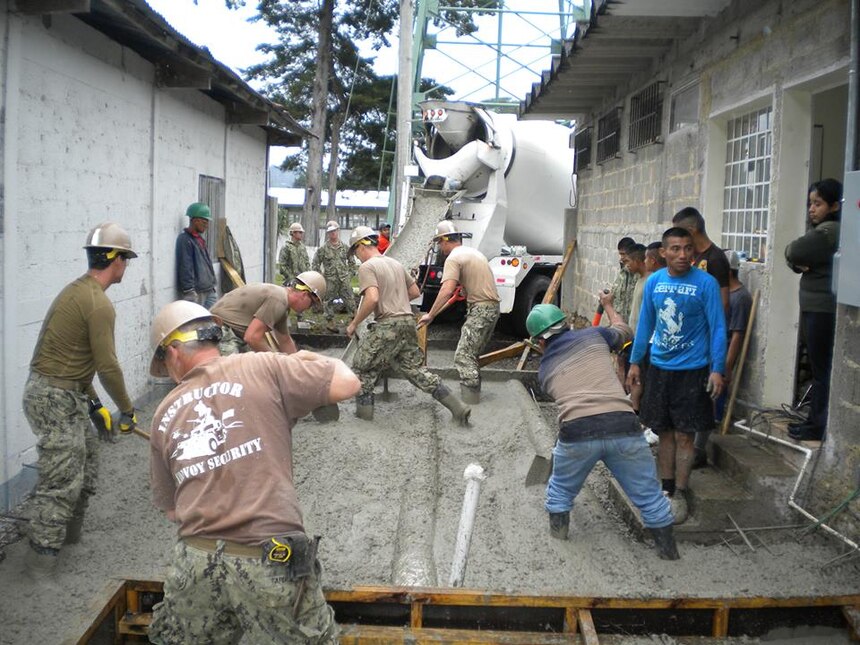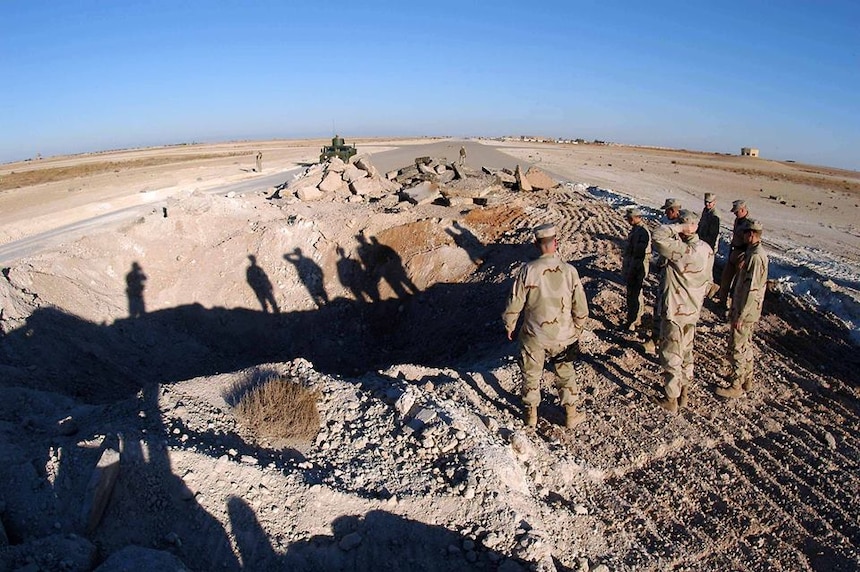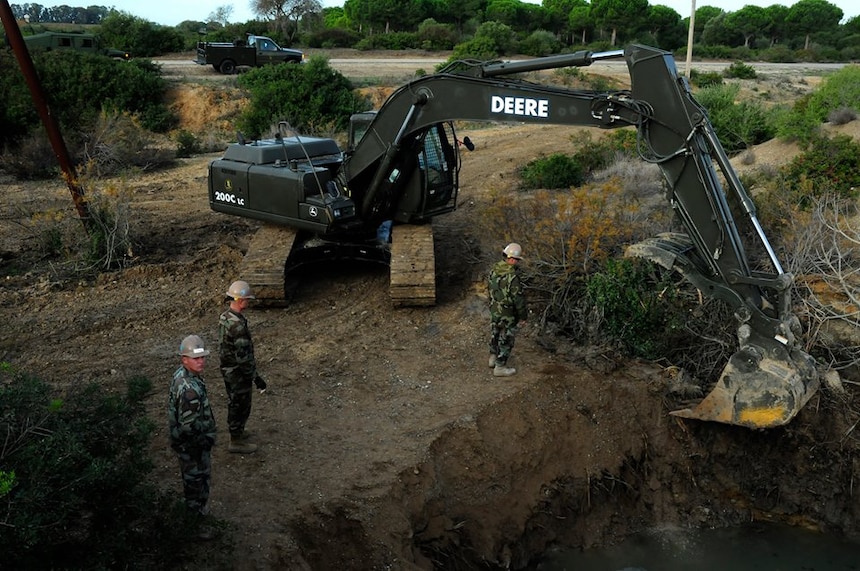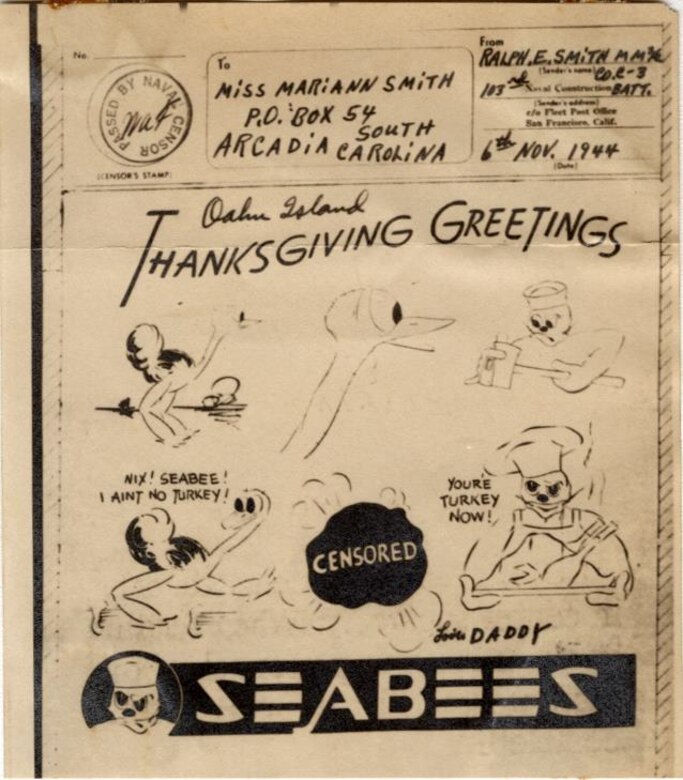November 22
1960: During the summer, an unusual rainfall caused Lake Miragoane, near Mira, Haiti, to rise and virtually isolate the southern tip of Haiti. Haitian Army engineers called on the United States to help. A Seabee detachment from Amphibious Construction Battalion (ACB) 2 was sent to the area. The detachment constructed a bridge and improved six miles of road leading to it. On November 22, the bridge and road were dedicated. The dedication ceremonies were attended by the U.S. ambassador to Haiti and numerous Haitian government officials. 1969: NMCB 121 relieved NMCB 8 on board Camp Haskins South, Da Nang, Republic of Vietnam (RVN). Nov. 22-26, 1969: NMCB 8 main body deployed from Camp Haskins South, Da Nang, RVN, to Construction Battalion Center (CBC), Port Hueneme, California. 1971: NMCB 5 completed its deployment to the Western Pacific (WESTPAC).
November 23
1942: 39th NCB commissioned in Norfolk, Virginia (exact location unknown). 1943: ACORN 14 and ACORN 17 arrived at Tarawa. (In World War II, Navy ACORN units, composed of Seabees and other components such as aircraft maintenance units, etc., were put together to design, construct, operate and maintain forward landplane and seaplane bases and operational facilities.) 1943: ACORN 16 arrives at Apamama Atoll, in the Gilbert Islands, Kiribati. 1945: 45th and 53rd NCRs inactivated. 148th NCB inactivated on Okinawa. 12th Special NCB inactivated at Okinawa. 1965: Advance party of NMCB 4 arrived at Camp Shields, Chu Lai, RVN.
November 24
1944: The necessity of building an airstrip on Samar Island in the Philippines became evident even before American forces landed there, so three Seabees and a geologist were landed to make a survey under the very noses of the Japanese. Led by Cmdr. Bradford Bowker, officer in charge (OIC), NCB 61, the group boarded a Landing Craft, Mechanized (LCM) on the night of Nov. 23, and silently stole ashore the following morning. Any thought of a secret landing was dispelled, however, as the small group reached shore. There, 5,000 cheering Filipinos stood to greet them. Instead of a sneak survey, the adventure turned into a wild party of eating, drinking and dancing. It seems that Bowker, a tall man with a hawk-like profile, was mistaken by the natives for Gen. Douglas MacArthur and nothing the commander could say convinced them otherwise. The next day, the secret survey was made and three days later the Seabees left the island with the location of the future airstrip determined. 1945: 44th NCR inactivated. 17th NCB inactivated and personnel transferred to 58th NCB on Okinawa. 101st NCB inactivated on Okinawa. 1967: Second increment of NMCB 58 s advance party arrived at Da Nang, RVN. 1992: The U.S. formally turned over the naval installations at Subic Bay and Cubi Point to the Republic of the Philippines, ending almost half a century of Seabee construction and maintenance at both installations. [caption id="attachment_17525" align="alignnone" width="748"]

2012: Seabees from Naval Mobile Construction Battalion (NMCB) 27 and peacekeepers at the CREOMPAZ military base in Coban, Guatemala poured a concrete pad as part of a renovation project in support of U.S. Southern Command's Global Peacekeeping Operations Initiative. The Seabees from NMCB 27 were forward deployed throughout South and Central America in support of U.S. Naval Forces Southern Command and U.S. 4th Fleet peacekeeping, multinational partnership, and humanitarian assistance missions. (Courtesy of U.S. Navy Seabee Museum)
November 25
1944: ACORN 35 decommissioned. [caption id="attachment_17537" align="alignnone" width="745"]

2004: Commander, Naval Reserve Force, Vice Adm. John G. Cotton viewed a Seabee project at the Al Asad airfield in western Iraq. Reserve Seabees assigned to Naval Mobile Construction Battalion Two Three (NMCB-23) took on this extensive project, which included making permanent repairs to 39 swimming pool-size impact craters on different sections of the airfields runways. The craters, a result of bombing during the 2003 invasion of Iraq, left the airfield inoperable for more than a year. Vice Adm. Cotton was in Iraq over the Thanksgiving holiday to meet with mobilized Navy reservists deployed to the region. (Courtesy of U.S. Navy Seabee Museum)
November 26
1942: On this date, Camp Parks was established near Shoemaker, California. Although originally established as a replacement and recuperation center for Seabee battalions returning from overseas, in practice the major service rendered at Camp Parks was the tactical training of Seabee units transferred from the east coast for embarkation to the war zone. Incidentally, Camp Parks was called upon from time to time to provide all phases of primary military and technical training for Seabee units. 1944: Construction Battalion Maintenance Unit (CBMU) 629 played an instrumental role in breaking Germany s formidable Rhine River barrier. The U.S. Army, concerned about the river s swift and tricky currents, called upon the Seabees to construct, operate and train their personnel in the operation of landing barges that would be used to carry assault forces into the enemy s homeland. Thus it was that CBMU 629 became the first Seabee unit to enter Germany on Nov. 26. 41st Special NCB formed at Hollandia. 1945: 17th NCR inactivated. 127th NCB inactivated at Leyte Samar, Philippines. 136th NCB inactivated on Guam. 145th NCB inactivated on Okinawa. 28th Special NCB inactivated at Yokosuka, Japan.
November 27
1943: 141st Naval Construction Battalion (NCB) commissioned at Naval Construction Training Center (NCTC) Camp Endicott, Davisville, Rhode Island. Nov. 27-Dec. 7, 1967: Naval Mobile Construction Battalion (NMCB) 5 main body arrived Dong Ha, Republic of Vietnam (RVN). 1970: Seabee Teams 0108 and 0109 departed Davisville, Rhode Island, for reassignment to officer in charge (OIC), Construction Battalion U.S. Pacific Fleet Detachment (CBPACDET), Guam and deployment to Palau and Kusaie, Trust Territory of the Pacific Islands (TTPI), respectively. [caption id="attachment_17538" align="alignnone" width="763"]

2009: Seabees from Naval Mobile Construction Battalion (NMCB) 3 operated an excavator to remove trash and brush from a natural spring at Naval Station Rota Spain. NMCB-3 restored the spring as part of an environmental rejuvenation project, which was requested by the Spanish Navy. (Courtesy of U.S. Navy Seabee Museum) [caption id="attachment_17536" align="alignnone" width="638"]

"Thanksgiving Greetings", V-mail, 6 November 1944. Seabee artists created stock V-mail messages that were used to send messages home. The messages were then filmed, sent home, and then printed back to paper upon arrival. V-mail was created to ensured that thousands of tons of shipping space could be reserved for war materials. The 37 mail bags required to carry 150,000 one-page letters could be replaced by a single mail sack. The weight of that same amount of mail was reduced dramatically from 2,575 pounds to a mere 45 lbs. (Courtesy of U.S. Navy Seabee Museum)
November 28
1945: 24th, 40th, and 68th NCBs inactivated on Okinawa. Section I of 106th NCB inactivated at Ie Shima. 2001: First members of NMCB 133 arrived a Camp Rhino, Afghanistan, during Operation Enduring Freedom.